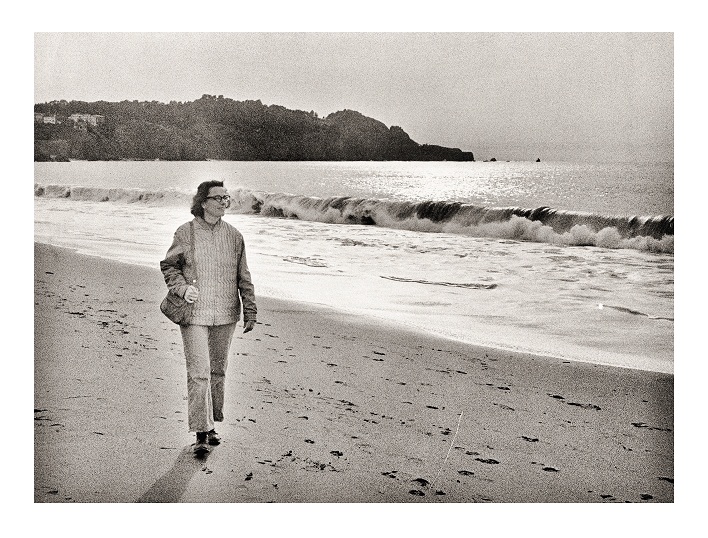Amy Meyer is sometimes referred to as the “Mother of the Golden Gate National Recreation Area” for her significant role in the creation of this park, one of the first national parks to be established in the middle of an urban area.
We recently chatted with Amy on the occasion of the 40th anniversary of this magnificent 75,500-acre national park that encompasses parts of Marin, San Francisco, and San Mateo counties. (See below for information on the park’s 40th anniversary celebration events.)
BN: Are you originally from the Bay Area?
AM: No, I’m originally from New York City, but my husband was drafted into the Air Force in 1955 and we settled in San Francisco. For the past 48 years, I have lived in the same place – 10 blocks from the ocean – and I can see the park from my house, from Ocean Beach all the way down to Pacifica.
BN: What originally inspired you to join the effort to create a national park at the Golden Gate?
AM: I got into this because there was a little piece of unused Army land near my house – 12 ½ acres of East Fort Miley – that was threatened with development. Within a couple of weeks, I learned this piece of land was a small part of a much bigger idea that had been taken up by local politicians like then-Congressman Phillip Burton to convert military land the country didn’t need anymore into a “national park next door” – for urban communities and the nation. At the time, I was looking for a small outside project – my kids were in elementary school – so I started a loosely-organized group of park advocates, and in January 1971 we named ourselves “People for a Golden Gate National Recreation Area.” Ed Wayburn, a board member of the Sierra Club, was the chair and I was co-chair.
BN: Was the idea popular from the outset?
AM: Yes! It was championed on the national, local, and state levels by politicians of both parties. Phil Burton, a House Democrat, was backed by liberal Republican congressman Bill Mailliard. In the Senate, Alan Cranston and John Tunney, both Democrats, lobbied for it. But we were also lucky because Walter Hickel, President Nixon’s Secretary of the Interior, supported it and was a major factor in its success. It was at this time that future U.S. Senators Dianne Feinstein, a San Francisco supervisor, and Barbara Boxer, a community activist, became advocates for the park
BN: What was the initial scope of this effort?
AM: The original national park concept would have preserved 8,000 acres at the Golden Gate including the seven historic military forts: Fort Funston, Fort Miley, the Presidio, and Fort Mason in San Francisco, and Forts Baker, Barry, and Cronkhite in southern Marin. Another fort – Fort Point under the Golden Gate Bridge – had already become a National Historic Site just as this campaign was about to start, in the fall of 1970.
But Alcatraz was actually the precipitating instance for preserving the land. The prison had closed in 1963 and there were proposals to turn it into a gambling casino or a west coast Statue of Liberty. A campaign ensued that said it should be something else. And then people and politicians agreed: “We can do so much more!” City, state, and private land filled spaces between the federal properties.
Today the 75,500 acres of the Golden Gate National Parks is part of a complex of 200,000 acres of protected habitat broken only at the Golden Gate. It includes Point Reyes National Seashore, the Marin Municipal Water District, and land in other jurisdictions. It is part of the UNESCO-recognized Golden Gate Biosphere Reserve.
BN: What makes this such a unique national park?
AM: We have so much scenery and habitat – plants, animals, birds and wildlife – abutting an urban area, as well as many historical buildings. We’ve also got the largest museum collection of artifacts in the National Park System.
This park has also been a hotbed of training for people in the National Park Service. They’ve come through the GGNRA and gone on to higher-level positions throughout the agency.
BN: What are your thoughts about the Bay Area’s tradition of conservation?
AM: The people out here since the Gold Rush have said, “This is a gorgeous place and we’ve got to save it.” San Francisco began protecting its beaches in the 1870s. Muir Woods became a National Monument in 1907. Mount Tam was protected beginning in the 1920s. There’s a tradition, an attitude about this beautiful place that we’ve got to keep it whole. But there’s also a saying that goes, “All of our gains are temporary, all of our losses are permanent.” So we have to keep watching out and working all the time to protect these natural and cultural treasures.
BN: What’s your favorite park unit, if you don’t mind me asking.
AM: This is painful! At the moment, the part that I really feel special about is the Marin Headlands. My other favorite place is Land’s End; in just a 20-minute walk from my house, my grandson and I can be there, out of sight and sound of the city.
BN: Some of the people involved with the park call you “the mother of the GGNRA”. How would you respond to this title?
AM: I usually just respond to “Mom”.
The Golden Gate National Parks and their nonprofit partner, the Golden Gate National Parks Conservancy, are sponsoring 40th anniversary events throughout the month of October, including several special events on Saturday, October 27th, the actual anniversary date. For more information, visit the Conservancy’s 40th anniversary web page.
Meyer tells the story of the epic effort to establish the park in her book New Guardians for the Golden Gate: How America Got a Great National Park(UC Press, 2006).





